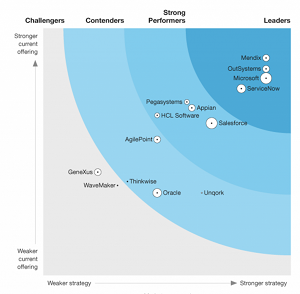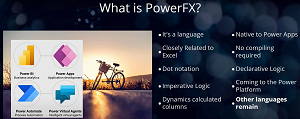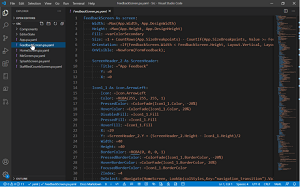News
Microsoft Power Apps Ranks High in Low-Code Research Report
Microsoft's Power Apps low-code development offering was among four market leaders identified in a new report from research firm Forrester.
The report, in the company's trademarked Forrester Wave format, places Microsoft among Mendix, OutSystems and ServiceNow in the "Leaders" part of the wave, ranking third on an index measuring the strength of current offerings. Fourteen vendors were included in the "Low-Code Development Platforms for Professional Developers, Q2 2021."
The low-code/no-code, rapid application development market in recent years has exploded in the face of increased demand for enterprise applications amid a dearth of experienced professional coding talent able to harness the greater power of more advanced tools like Visual Studio and VS Code.
The global pandemic served to further that growth, Forrester indicated.
"As the COVID crisis proved, rapid app development and constant iteration in software have become table stakes. Thus, low-code platforms are now a first-class development approach. At the same time, vendors from more specialized segments are maturing their capabilities across a wider range of use cases and developer personas -- leading to a convergence in the digital process automation (DPA) and low-code markets," Forrester said.
Power Apps is the low-code development component of Microsoft's larger Power Platform, which also includes offerings for Business Intelligence and other functionality.
 [Click on image for larger view.] Low-Code Development Platforms for Professional Developers, Q2 2021 (source: Forrester/Microsoft).
[Click on image for larger view.] Low-Code Development Platforms for Professional Developers, Q2 2021 (source: Forrester/Microsoft).
The product enables users to create their own applications typically for specific business functions, while also providing professional developers with a simple and quick development route, the latter being the focus of this report.
Professional coders are among several different constituencies targeted with the product:
- App makers/creators: They can create basic canvas, model-driven, and portal apps.
- App users: They can run apps created by themselves or shared with them by other creators, on mobile devices or browsers.
- Admins: They create and manage environments, users, roles, and data-loss prevention policies.
- Developers: They can write code to extend the basic functionality of simple Power Apps.
Power Apps offers options for developing canvas apps (starting with a blank slate to which components are added), model-driven apps, web portals or Dataverse-based apps (business data repositories). It also includes services and data connectors.
Last year, Microsoft announced Power Apps enhancements including mixed reality, canvas/model support in a new mobile app, UX improvements and more.
These and other moves have resulted in a glowing review from Forrester.
"Ubiquitous in enterprise, Microsoft's Power Apps is fast becoming a standardized low-code platform of choice," the report says. "The software giant's aligned technology strategy -- from Azure to Office, with Power Apps as the low-code lingua franca at the center -- is powerful and unique."
 [Click on image for larger view.] What Is Power Fx? (source: Rory Neary).
[Click on image for larger view.] What Is Power Fx? (source: Rory Neary).
The report also references the open source PowerFx programming language that Microsoft introduced to the platform in March, based on Excel spreadsheet technology.
 [Click on image for larger, animated GIF view.] Power Fx in Animated Action in VS Code (source: Microsoft).
[Click on image for larger, animated GIF view.] Power Fx in Animated Action in VS Code (source: Microsoft).
"The product is comprehensive, with good features across the breadth of our assessment and several great ones," the report said. "Integration capabilities are a standout, and one customer said that the product's 'growing ecosystem of connectors' was helpful in automation projects. Other high points are the Excel-style Fx development language, AI features designed expressly for citizen developers, and tooling for UX and mobile development."
However, the report also mentions weaknesses.
"A key weakness is the portfolio approach to adjacent Power Platform capabilities (such as Power BI) and useful Azure services (such as Azure DevOps), which must all be separately licensed and can cause confusion. Also, Power Apps is only available through a traditional PaaS model -- a mismatch for customers that must deploy their apps on-premises or to another cloud provider."
Microsoft yesterday (May 11) published a blog post noting its inclusion as a leader in the report.
Seizing on the opportunity for more PR, the post listed five reasons the project is popular:
- Power Apps enables fusion teams, from citizen to professional developers, to seamlessly collaborate. From a low-code interface to empower everyone to build apps quickly, to sophisticated UX controls, Power Apps' combination of drag and drop functionality and rich developer tools like Azure DevOps and GitHub empowers all developers to be productive and collaborate effectively.
- A powerful built-in data platform with rich connectivity. Power Apps natively includes Microsoft Dataverse, a fully managed data platform built atop Microsoft Azure. Dataverse offers the scale, sophistication, and security necessary to run advanced workloads, wrapped in the approachable productivity of low-code tools. In addition, Power Apps enables customers to connect directly to data using one or more of 400 plus connectors to Microsoft and third-party data sources to build rich mashups of data sources in a single view for an application. Customers can also create their own connectors to any service with a REST API.
- Deep integration across the entire productivity experience. Power Apps is natively integrated into all Microsoft cloud offerings. Microsoft Power Platform is the single extensibility platform across productivity apps and Microsoft Teams (Office 365), business apps (Dynamics 365), and our developer cloud (Azure). With an embedded app studio in Microsoft Teams, and our investment in Dataverse for Teams, everyone can now build, customize deploy, share, and use apps all from within Microsoft Teams.
- A trusted, secure, and governable platform. Customers are adopting Microsoft Power Platform to help steer away from shadow IT and silos to common platforms that are easy to govern and monitor in a unified way. Power Apps offers enterprise reliability via 100 plus Azure data centers, Microsoft's global network edge and a 99.9 percent financially backed uptime guarantee, as well as 90 compliance certifications, more than any other low code data platform. With a unified admin center across Microsoft Power Platform with built-in security roles and permissions, customizable DLP policies, and authentication via Azure Active Directory (Azure AD), IT is armed to combat shadow IT with full visibility into what the business is doing, and centrally manage Power Apps across their organization.
- The world's most comprehensive low code platform. From low code apps, to automation, to analytics, chatbots, built-in AI, to process mining and RPA, Microsoft Power Platform provides customers with the most complete set of low code tools in a connected platform that ensures all customers, and all their employees, regardless of whether they have technical skills or are software engineers, have the tools they need to solve problems at scale across their organizations.
"Microsoft is a logical fit for customers wishing to launch their pro coders and technically minded Office users together into the low-code age," Forrester said in concluding its Power Apps profile.
Such reports from research firms are often provided to the public in licensed-for-distribution formats from leaders, as is the case here. A simple web search for this report will find multiple such offers, which sometimes require registration information.
About the Author
David Ramel is an editor and writer at Converge 360.